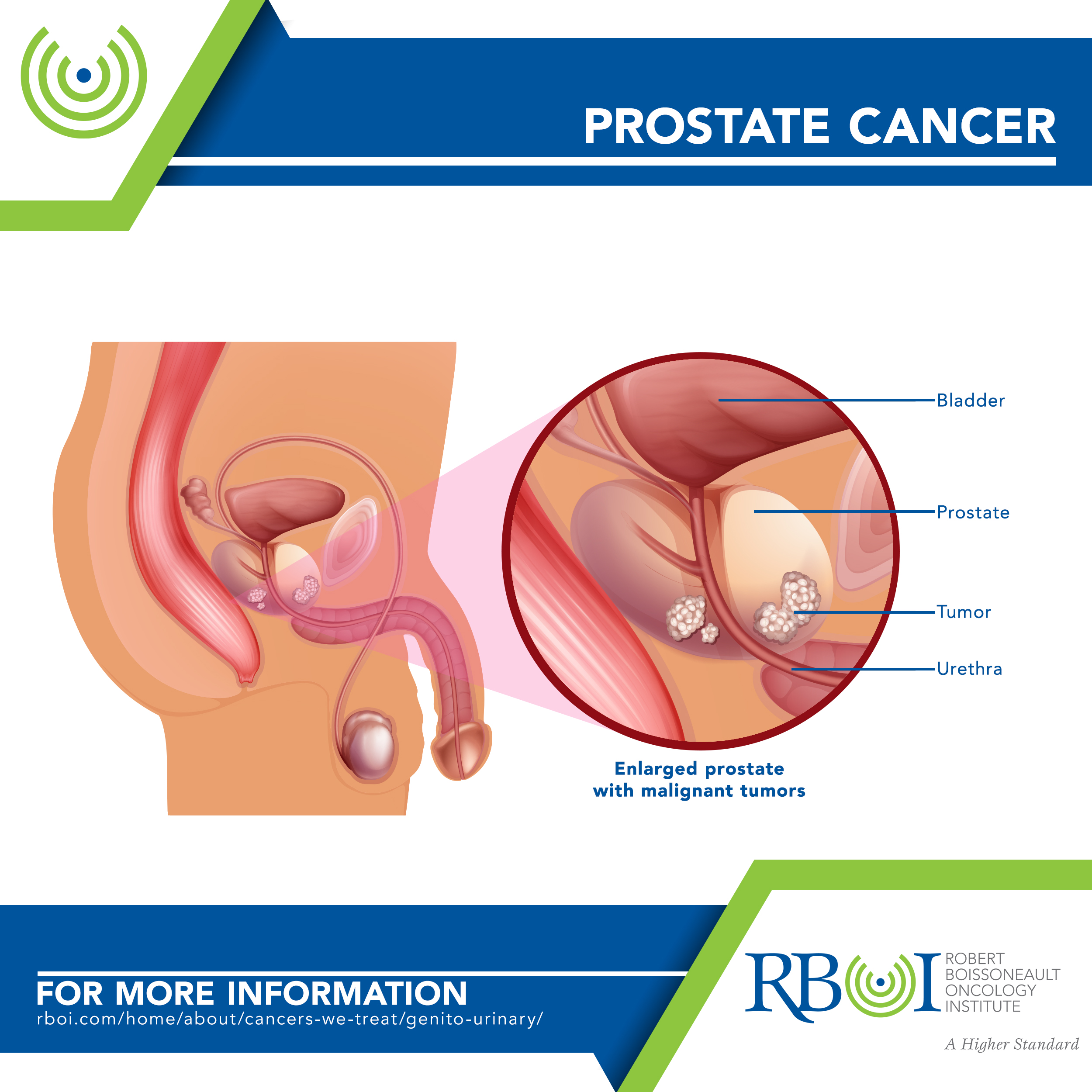Prostate Cancer
Prostate cancer is the most common cancer among men in the United States. Some prostate cancers grow very slowly and may not cause symptoms or problems for years or ever. Even advanced prostate cancer can be managed with good health and quality of life for a long time. But other prostate cancers are more aggressive. Monitoring for tumor growth is an important part of managing this disease. Screening is done with a blood test that measures prostate-specific antigen (PSA).
-
Forms of prostate cancer
Adenocarcinomas account for almost all prostate cancers and develop from the gland cells (the cells that make the prostate fluid that is added to the semen).
Other types of prostate cancer are rare, but include:
Sarcomas
Small cell carcinomas
Neuroendocrine tumors other than small cell carcinomas
Transitional cell carcinomas -
Risk factors for prostate cancer
Age, Agent Orange exposure, Diet/obesity, Family history, Gene changes, Race/ethnicity
Age — Prostate cancer is rare in men younger than 40, but the risk of prostate cancer rises rapidly after age 50. More than 80 percent of prostate cancers are diagnosed in men age 65 or older.
Agent Orange exposure — The U.S. Department of Veterans Affairs lists prostate cancer as a disease associated with exposure to Agent Orange, a chemical used during the Vietnam War. The Institute of Medicine considers there to be “limited/suggestive evidence” of a link between Agent Orange exposure and prostate cancer.
Diet/obesity — Men who eat a lot of red meat or high-fat dairy products appear to have a slightly higher chance of getting prostate cancer. These men also tend to eat fewer fruits and vegetables. Doctors aren’t sure which of these factors is responsible for raising the risk. In addition, some studies have found that obese men have a lower risk of getting a low-grade (less dangerous) form of the disease, but a higher risk of getting more aggressive prostate cancer.
Family history — Prostate cancer that runs in a family, called familial prostate cancer, develops from a combination of shared genes and shared environmental or lifestyle factors and accounts for about 20 percent of cases. Hereditary prostate cancer occurs when changes in genes, or mutations, are passed down within a family from one generation to the next and occurs in about five percent of all cases. A man whose first-degree relative (father, brother, or son) has prostate cancer carries a risk of developing prostate cancer that is two to three times higher than the average risk. The more relatives diagnosed with prostate cancer, the higher the risk.
Gene changes — Inherited gene changes probably account for only a small percentage of prostate cancers. Hereditary breast and ovarian cancer (HBOC) syndrome involves mutations in the BRCA1 and BRCA2 genes and may increase prostate cancer risk. Men with BRCA1 or BRCA2 mutations should consider screening for prostate cancer at an earlier age. Men with Lynch syndrome (also called hereditary non-polyposis colorectal cancer, or HNPCC) have an increased prostate cancer risk.
Race/ethnicity — Prostate cancer occurs more often in African-American men and in Caribbean men of African ancestry than in other men. Black men are also more likely to develop prostate cancer at an earlier age and to have more aggressive tumors. Hispanic men have a lower risk of developing and dying from prostate cancer than non-Hispanic white men. Prostate cancer also seems to be increasing among Asian men living in urbanized environments.
-
Symptoms of prostate cancer
Frequent urination, including the urge to urinate frequently at night
Weak or interrupted urine flow or the need to strain to empty the bladder
Blood in the urine or semen
New onset of erectile dysfunction
Pain or burning during urination (this symptom is less common)
Discomfort or pain when sitting, caused by an enlarged prostate
Pain in the hips, back (spine), chest (ribs), or other areas from cancer that has spread to bones
Weakness or numbness in the legs or feet, or even loss of bladder or bowel control from cancer pressing on the spinal cord
-
How is prostate cancer treated with radiation?
External-beam radiation therapy (EBRT), delivered from outside the body, is the type of radiation therapy used most often to treat prostate cancer. The most common type of EBRT for prostate cancer is intensity-modulated radiation therapy (IMRT), in which the intensity (strength) of the beams can be adjusted to limit the doses reaching nearby normal tissues. High doses of radiation can be directed at the prostate without increasing the risk of damaging nearby organs.
Internal radiation therapy (brachytherapy) involves placing small radioactive pellets (seeds) directly into the prostate. Brachytherapy alone is generally used only in men with early-stage prostate cancer that is relatively slow growing (low-grade). Brachytherapy combined with external radiation is sometimes an option for men who have a higher risk of the cancer growing outside the prostate.
Radiation may be used as the first treatment for cancer that is still just in the prostate gland and is low grade.
Radiation may be used as part of the first treatment (along with hormone therapy) for cancers that have grown outside the prostate gland and into nearby tissues.
Radiation may be used if the cancer is not removed completely or comes back (recurs) in the area of the prostate after surgery.
Radiation may be used if the cancer is advanced, to help keep the cancer under control for as long as possible and to help prevent or relieve symptoms (palliative care).

Click here to learn more about RBOI’s radiation treatment options
Click here to watch a walk-through of what is involved in radiation treatment at RBOI
More extensive information about prostate and other cancers may be found at these sites:
American Cancer Society: Cancer.org
American Society of Clinical Oncology: Cancer.net
National Cancer Institute: Cancer.gov
